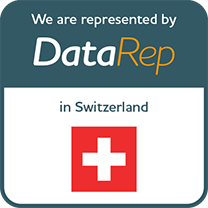How do you get information into a business in a way that makes sense, makes people think differently and gives them the confidence to make better decisions as a result?
The industry default seems to be a PowerPoint presentation, a Word report or, perhaps, a video.
But we wonder if there is a better way to achieve this?
Back when we started The Forge in 2013, before we had coffee cups, working pens or even Simon’s prized shredder, we bought a large sheet of Perspex. And each time we tackled a project we used the piece of Perspex to help us work through the challenge – bringing everyone’s views together and mapping out our analysis, hypotheses and first thoughts on the story.

We’ve spent many, many hours sitting around the Perspex (which, in our new office, is much nicer and takes up 2 walls) had countless discussion, eureka moments, frustrations and the odd stand-up argument.
And through this rigorous approach to problem solving, we produced our best work.
Initially these were just internal sessions and the story produced on the Perspex would be transformed into a PowerPoint / Word / video (delete as appropriate) but increasingly we have been sharing this raw thinking with our clients BEFORE committing it to a final document of any kind and sometimes not even creating a document at all.
Here’s why.
1. REAL COLLABORATION
As an industry we talk about this endlessly and everyone claims to work in partnership with their clients. But this never seems to extend to the final answers. Agencies retreat behind their lines post-fieldwork and get on with writing the PowerPoint that they will reveal in the final debrief.
But in the sessions we run with clients we work through what is on the wall together. These sessions are always billed as a chance to pull it apart and put it back together again; for people to bring in their own learnings, stress-test the thinking and genuinely refine and build the story to get to the best solution before sharing more widely in the business.

2. IT’S MORE EFFICIENT
This approach is highly efficient and can significantly shorten project timelines.
At the end of our analysis we are immediately in a position to share; there’s no delay while a report is written so clients can have access to the thinking and conclusions more quickly and can start the process of making decisions where relevant.
And on challenges which could go in multiple directions, sharing initial thinking means clients can help us shape the project to go in the direction that will work best for their business, meaning no time and effort is wasted taking a route which is not viable.
3. THE BEST SOLUTION, NOT JUST BETTER
We think this approach engenders a very different mindset to the one people tend to adopt when reviewing a report (regardless of how prominently a ‘draft’ label is stuck on that report.) If you are asked to review a document, the mindset is automatically ‘how can I make what is in front of me better’ rather than ‘is what is in front of me right in the first place?’ So we end up tweaking; changing a word or two here and there, maybe moving the odd section round, spell checking and error spotting. Rarely, if ever, does the final version look wildly different to the original draft, the refinements might make it better, yes, but does it mean you have got to the best story and solution?
Conversely when you are a presented with raw thinking, handwritten on a Perspex wall the mindset is very different; the format invites critique, it gives people the freedom to challenge and refine at every step and it actively encourages you to get involved in shaping the story.
4. SEEING THE WHOLE PICTURE
One of the key reasons that we can really pull the story apart and put it back together again is that the Perspex wall allows us to see the whole picture. PowerPoint or whatever other medium you choose to use will, by its very nature be linear whereas the challenges we are trying resolve rarely are.
Being able to see the whole picture at once is a great way of really getting to grips with the issue and the solution and understanding how all the pieces best fit together. Because this is about creating a story, not just telling a story. This is about taking multiple strands and narratives and forging them together in such a way as to incite real action from a business.

5. IT’S MORE FUN & MORE ENGAGING
This way of working is more fun for us and it’s more fun for our clients. I doubt many people would claim to love sitting down to review a document but people do love sitting down together to really crack a problem.
In our experience clients who have worked with us in this way find that they are able to engage much more with both the problem and solution. No matter how well written your research report is, it will only ever allow for a certain depth of engagement – working this way, not only being part of the diagnosis of the problem but also the architect of the solution allows for much greater engagement.
And when you are more engaged with a solution it becomes easier to tell that story to others, because it is your story, not one that has just been passed to you. And when you can tell your own story you can tell it more eloquently, more passionately and with more conviction, helping you achieve the buy-in required from the rest of the business.
6. IT GIVES CONFIDENCE
We think this approach takes quite a lot of confidence: confidence from clients to engage with a process like this and confidence to present raw and sometimes as yet unfinished thinking.
It means there is nowhere to hide. There is no polished formatting or fancy artwork to distract from the analysis and conclusions. Sub-standard work would never stand up to scrutiny in this setting.
And when everyone is confident that the work really is robust, clients feel empowered to make decisions and take action, which ultimately is the point of why we are all doing this in the first place.
For all these reasons, we love working this way and our clients love it too.
“We enjoyed working with The Forge and thought that the collaborative approach of developing the final Debrief together was a great value add. It helped us shape the recommendation with both consumer and commercial realities in mind.” Innovation Team at Innocent Drinks
So next time someone sends over a project timeline with a week or so built in for them to write their report, do ask if there is another way.


